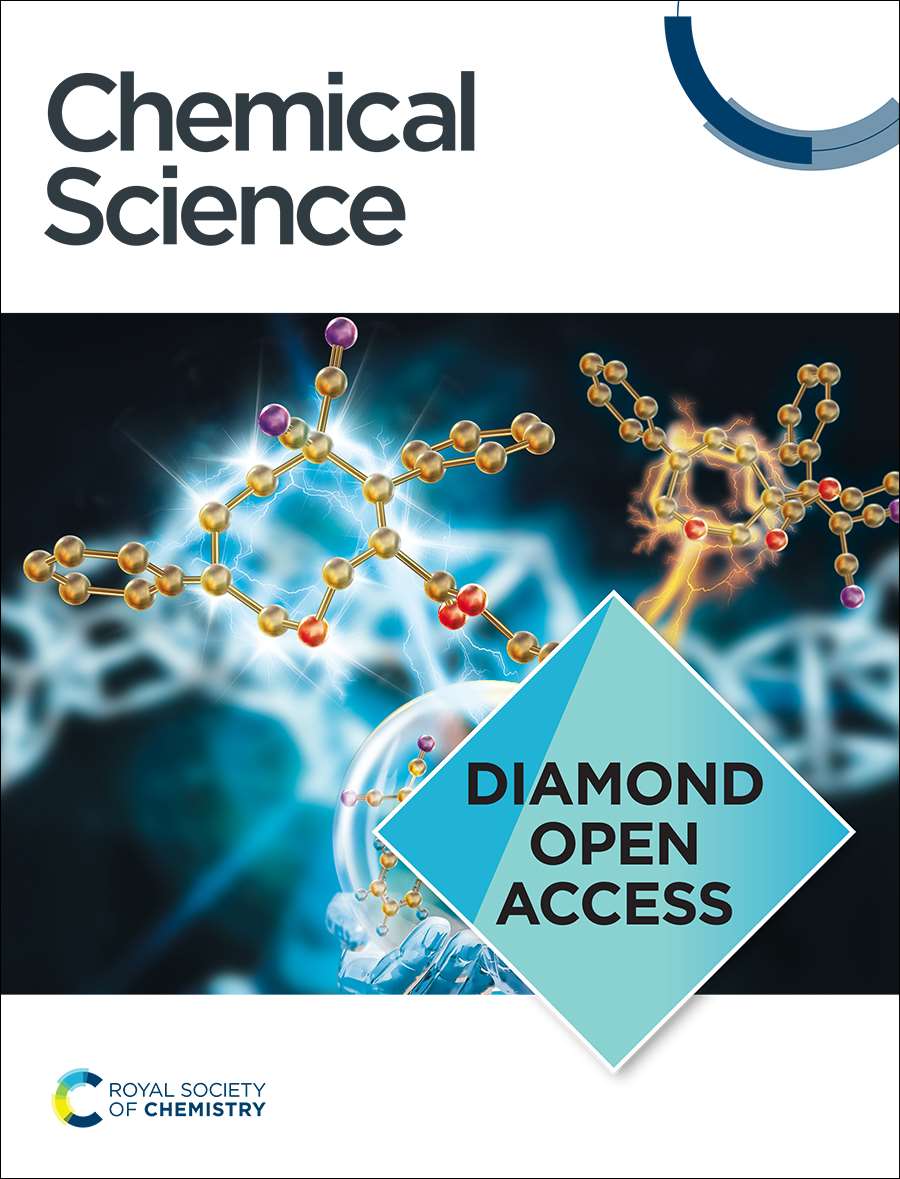对编码 RiPP 库拉索唑的隐性生物合成基因簇的分析发现了一种苯丙氨酸特异性肽羟化酶
IF 7.6
1区 化学
Q1 CHEMISTRY, MULTIDISCIPLINARY
引用次数: 0
摘要
Curacozole 属于核糖体合成和翻译后修饰肽(RiPPs)中一个不寻常的类蓝藻素亚族。该分子的特点是具有小的大环结构、包含一个苯基恶唑分子的多唑序列和一个 D-allo-Ile 残基。其形成所需的酶步骤尚不十分清楚。库拉索链霉菌(Streptomyces curacocoi)中库拉索唑的预测生物合成基因簇(BGC)是隐秘的,但在组成型表达 bldA 指定的 Leu-tRNA(UUA) 分子时被证明是有效激活的。异源表达和基因缺失研究确定了最小 BGC 由七个基因组成:czlA、D、E、B1、C1、F 和 BC。该生物合成途径对底物的耐受性很强,可接受前体肽 CzlA 的六种变体来形成新的杉氮唑衍生物。这包括通过转换相应的 CzlA Phe18Trp 和 Phe18Tyr 变体,用吲哚和对羟基苯并恶唑基团取代呋喃唑酮的苯并恶唑基团。用纯化酶进行的体外实验表明,CzlD 和 CzlBC 分别进行环脱水和脱氢反应,从 CzlA 的 Ser 22 形成单个噁唑。Curacozole BGC 的侧翼是 czlI,这是一个非必要但功能不明的保守基因。体外研究表明,CzlI 是一种非血红素铁/2-氧代戊二酸依赖性二氧合酶,可催化 CzlA 上的 Phe18 发生羟基化反应,形成 CzlA Phe18Tyr 变体,然后经处理形成呋喃唑的对羟苯基恶唑衍生物。总之,这项工作凸显了 RiPP 生物合成可用于新化合物的工程生产,并增加了已知 RiPP 酶的种类。本文章由计算机程序翻译,如有差异,请以英文原文为准。
Analysis of the cryptic biosynthetic gene cluster encoding the RiPP curacozole reveals a phenylalanine-specific peptide hydroxylase
Curacozole belongs to an unusual cyanobactin-like sub-family of ribosomally synthesized and post-translationally modified peptides (RiPPs). The molecule is distinguished by its small, macrocyclic structure, a poly-azole sequence that includes a phenyloxazole moiety, and a D-allo-Ile residue. The enzymatic steps required for its formation are not well understood. The predicted biosynthetic gene cluster (BGC) for curacozole in Streptomyces curacoi is cryptic, but is shown to be potently activated upon constitutive expression of the bldA specified Leu-tRNA(UUA) molecule. Heterologous expression and gene deletion studies have defined the minimum BGC as consisting of seven genes, czlA, D, E, B1, C1, F, and BC. The biosynthetic pathway is highly substrate tolerant, accepting six variants of the precursor peptide CzlA to form new curacozole derivatives. This includes replacing the phenyloxazole moiety of curacozole with indole and p-hydroxyphenyloxazole groups by conversion of the corresponding CzlA Phe18Trp and Phe18Tyr variants. In vitro experiments with purified enzymes demonstrate that CzlD and CzlBC perform cyclodehydration and dehydrogenation reactions, respectively, to form a single oxazole from Ser 22 of CzlA. The curacozole BGC is flanked czlI, a non-essential but conserved gene of unknown function. In vitro studies demonstrate CzlI to be a non-heme iron / 2-oxoglutarate dependent dioxygenase, catalyzing the hydroxylation of Phe18 on CzlA to form the CzlA Phe18Tyr variant, which is then processed to form the p-hydroxyphenyloxazole derivative of curacozole. Overall, this work highlights the amenability of RiPP biosynthesis for engineering the production of new compounds and adds to the repertoire of known RiPP enzymes.
求助全文
通过发布文献求助,成功后即可免费获取论文全文。
去求助
来源期刊

Chemical Science
CHEMISTRY, MULTIDISCIPLINARY-
CiteScore
14.40
自引率
4.80%
发文量
1352
审稿时长
2.1 months
期刊介绍:
Chemical Science is a journal that encompasses various disciplines within the chemical sciences. Its scope includes publishing ground-breaking research with significant implications for its respective field, as well as appealing to a wider audience in related areas. To be considered for publication, articles must showcase innovative and original advances in their field of study and be presented in a manner that is understandable to scientists from diverse backgrounds. However, the journal generally does not publish highly specialized research.
 求助内容:
求助内容: 应助结果提醒方式:
应助结果提醒方式:


